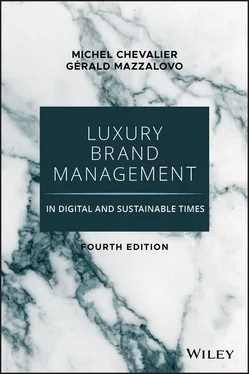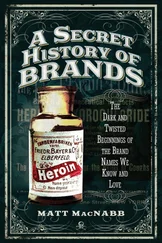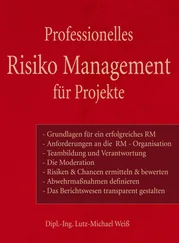The fashion cycle lasts 18 months. During that same period, of course, another Spring–Summer collection will be committed, selected, presented, and delivered, and results will not be known until the very end of the cycle. This is why, when a company decides to change its designer, the new stylist will need a minimum of two years to impose a new style, to define his or her personal view of the brand, and to make it a success.
Some brands have tried to get out of this straitjacket by having additional, interim collections (the so-called cruise collections), but the system remains quite rigid. Some newcomers in the mass-market segment, such as Zara, have rejected the traditional system and develop 26 collections a year. However, unless they deal with very high volumes, they have difficulty purchasing exclusive materials and are forced to present collections produced mainly in plain or standard fabrics.
This time frame forces brands to plan a long time ahead, and it is a long time before consumers can really see major changes in styles or in brand positioning in their local stores.
For the reasons mentioned, in the luxury field there is no short-term impact of major strategic decisions. For a luxury fashion brand, for example, the results of changing the designer might not be seen until two or three years down the road.
Brands themselves cannot be modified overnight. They have a specific identity in the mind of the consumer, and it is difficult to modify this. Celine, for example, is a very feminine brand and its attempts to launch masculine products have been conspicuously unsuccessful. Paco Rabanne is, curiously, a designer for women, but the brand was mainly known for masculine perfumes until the One Million lady was a success. Some brands are modern, others are perceived as traditional. It is very difficult to change such perceptions. Chanel is a brand for women, but it also has fragrances, ties, and watches for men. At the moment, it does not have a strong men's ready-to-wear; in the long run, it probably will. But this is a major change that the brand is preparing for by presenting its masculine products at its fashion shows for women. The idea is to convince the customer that Chanel is a brand for both women and men. This may take some time, and its men's ready-to-wear products are not yet available in the stores. When the consumer changes his mind, they will be.
It takes time to turn a brand around, as the experience of Saint Laurent clearly shows. When the fashion brand was purchased by the Gucci Group, everybody thought the turnaround in its fortunes would be rapid. However, with accumulated losses already amounting to several hundred million euros, the brand continued to lose money for a few more years before it started to turn around in 2013 and is now extremely successful.
This has major implications for investors who want to buy and redevelop a brand that has lost its image and sales. This may be possible for watches and for wines and spirits, but for fashion and perfumes it is very difficult. If a brand is not doing well, its identity must be modified over time. The paradox is that when this is done, customers have the feeling that the brand has been mishandled and its history betrayed. In the end, nobody is happy—unless a great deal of time, effort, and money are committed to the cause.
Of course, as we explain later, it has been possible to take brands such as Gucci and Burberry, which were doing relatively well, modify them over time, and increase their sales substantially. But when smaller brands such as Jacques Fath or Poppy Moreni have lost their glamour, their interest, and their reason for being, there is not much that can be done to bring them back into the limelight.
This time frame explains why private-equity specialists or private individuals seldom purchase a majority of small luxury brands. There are exceptions—Balenciaga, Balmain, or Versace—but turnarounds are seldom successful.
This is why this activity has been traditionally the field of family firms, which have time and can accept poor results for a few years before growing and making money again. There are many in this situation, including Chanel, Salvatore Ferragamo, Armani, Versace, Laurent-Perrier, and Pernod Ricard. And we should never forget that three of the major luxury groups, LVMH, Kering, Richemont, are also controlled by families. In fact, except for a few examples (Burberry, Diageo, Hugo Boss, or Helmut Lang), all luxury companies in France, Italy, the United States, China, and Japan are family controlled or belong to a group which, in turn, is also family controlled.
The Key to Success in Luxury Goods
Professor Bernard Dubois used to start on this subject by speaking of the paradox of luxury goods (see Table 2.2). To achieve success in this field, he said, it was necessary to do exactly the opposite of what was taught in traditional marketing lessons.
Table 2.2 The Paradox of Luxury-Goods Marketing
Source: Bernard Dubois, L'art du Marketing, Paris: Village Mondial, 1998, p. 292.
| High price |
| High cost |
| Craftsmanship |
| Limited distribution |
| Low promotional activity |
| Advertising with no sophisticated copy strategy |
At first glance, high prices, high costs, no manufacturing investment, and a limited distribution do not seem to be normal marketing practice. But the process is based on the creation of a well-controlled scarcity. The product must be known and be visible, but it should also appear expensive and slightly out of reach. Customers must go out of their way to find it. This is a niche marketing approach that can only work when the brand has a strong identity and a reason for being. It also requires a specific aesthetic concept: the product must be easily recognizable and in line with the mood of the time and with the specific fashion trends.
The Need for a Strong Name
We come back again to brand identity. It frequently starts with the name of a person, then must be extended, and should always keep bringing additional value and reasons for being.
Most luxury brands start with a person's name; that of a craftsman or a designer who was different from the crowd and who made things differently. Louis Cartier made watches and jewelry. Sotirio Bulgari used Greek and Roman art in his pieces while giving them a contemporary touch. This became a reference for customers and a guarantee that the products bearing the name of the founder remained exclusive high-quality objects. It was Salvatore Ferragamo who made shoes for actresses, and Coco Chanel who made dresses for her most sophisticated friends. It was Giorgio Armani and Valentino Garavani who started their own fashion collections. Boucheron, Chaumet, and Van Cleef & Arpels are all family names.
Some brands do not bear the name of a founder. This is the case of Lancôme, which was created by the Petitjean family. In the case of Ralph Lauren, the name itself is a creation of the founder, and little by little it has become his own name. This act itself is a kind of recognition of the importance of a discrete family name and identity for all luxury businesses. Those, like Aquascutum or Escada, that have no such name seem to miss something, to somehow lack identity. A family name embodies a heritage and implies that products are made for just a very small category of friends, at least at the beginning.
Brand Extension and Legitimacy
As we have seen, the process of establishing a brand often starts with a name. But the name can limit the scope of the business to the craft of the founder: Ferragamo and Prada make shoes; Gucci makes handbags; Louis Vuitton makes travel bags; Christofle makes silver-plated tableware, and so on.
Читать дальше












